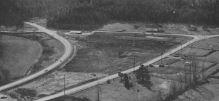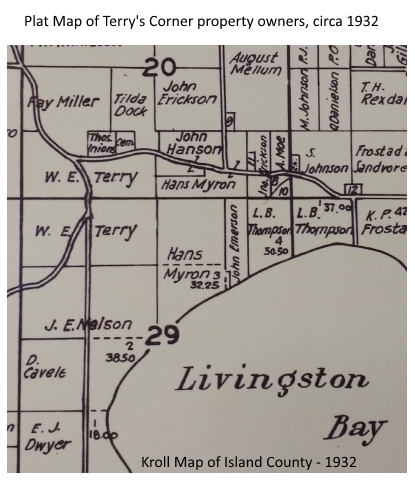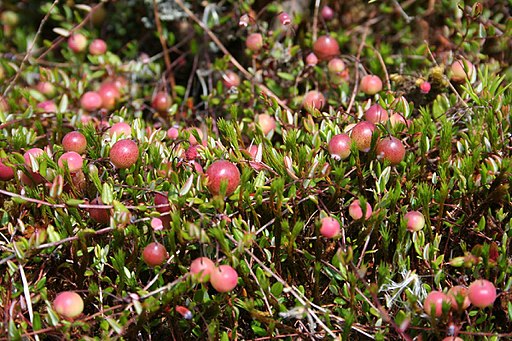
Farm fields in the foreground were once a boggy wetland in the early days and the barn in the distance originally belonged to Mr. Terry. This local landmark was located on the west side of Sunrise Drive and collapsed in 1978. Photograph taken in 1974 by Howard Hansen, Stanwood News photographer
The commercial triangle of land bordered by North Camano Drive, Sunrise Drive, and S. R. 532 became known as Terry’s Corner for William Terry. Terry owned the farm at the intersection of North Camano Drive and Sunrise Drive since 1929. Prior to that it was known as MacEacheran’s Corner. MacEacheran was the local doctor who owned the farm there in 1912 on North Camano Drive. (In the map below, this was the Fay Miller property just out of the photo in the ae rial view.)
rial view.)
 According to early accounts the lowland farm fields south of Terry’s Corner had once been a peat bog of cranberries with a small slough draining into it. It was diked by early homesteaders. Wagon roads replaced the skid roads as the surrounding area was cleared of trees in hopes that could eventually be farmed. Early accounts also said the bog was burned and stumps dynamited to create the farm fields that are still productively cultivated.
According to early accounts the lowland farm fields south of Terry’s Corner had once been a peat bog of cranberries with a small slough draining into it. It was diked by early homesteaders. Wagon roads replaced the skid roads as the surrounding area was cleared of trees in hopes that could eventually be farmed. Early accounts also said the bog was burned and stumps dynamited to create the farm fields that are still productively cultivated.
In 1918 Aubrey Nelson bought the land that is still cultivated south of S. R. 532. It had been an early logging camp employing 40-50 men operated by Alfred Leque. The farm fields on had to be cleared of the peat bogs that were said to have cranberries. Eventually after years of burning and removal of the peat and stumps, the fields were cleared and workable.
S. R. 532 was dedicated in October 1969 bypassing many indirect curves and intersections from I – 5 through Stanwood ending at Terry’s Corner. This bypass created a more direct access to the south part of the Island. It had to cross the bog that was probably pretty impassable so a significant berm or levee was built to raise it across the wetland. For those us who drive past this view every day, we still can note the wild rose, cherry, salmonberry and thicket of other native plants that now include the blackberry and other invasives, but so far we have not found cranberries.
An Internet search for cranberry bog pictures (Vaccinum oxycoccos) what this area might have looked like originally.


By B.Lezius – Own work, CC BY 3.0, https://commons.wikimedia.org/w/index.php?curid=8798492
Stay tuned for part 2
Early accounts of the history of this area were published in our newsletter Stanwood Area Echoes no. 18: “LIvingston Bay, Camano Island 1862 – 1920” and “Profile of an Early Settler on Camano Island” by Elizabeth Nelson. Copies are available by request, click Contact Us.
